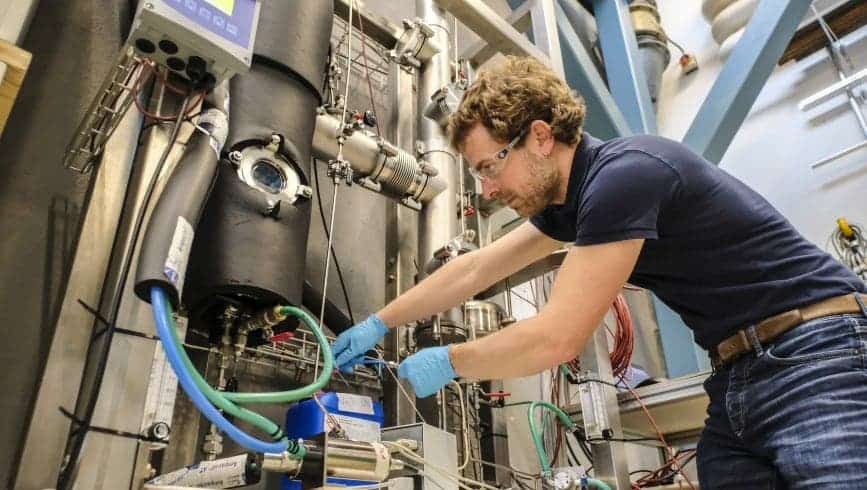A new Swiss technology could allow households everywhere to store heat during the summer and release it when the colder months swing by. They hope the system will offer a simple to use alternative to fossil fuel heating.

Even if you do want to do your part in reducing fossil fuel use, it’s hard not to turn up the thermostat on the heater when winter comes. A group from the EMPA (the Swiss Federal Laboratories for Materials Testing and Research) thinks they’ve come up with an instant, no-hassle alternative to stay warm. Their method stores heat during the summer and releases it in winter just with the press of a button. Even more, the stores of captured energy can be carried around wherever they’re needed.
The way it works
The technology uses a concentrated NaOH (sodium hydroxide) solution as a kind of thermal battery, and largely off the shelf components to recharge or discharge the stored heat. Sodium hydroxide is extremely good at absorbing water from the environment, which in itself doesn’t have anything to do with storing energy. What does, however, is the fact that mixing these two substances creates a powerfully exothermic reaction, releasing chemical energy stored in NaOH as heat. So pouring water over this solution releases large amounts of energy.
The team settled on using a 50% NaOH solution, a viscous liquid that is set to trickle down a spiral pipe — like the ones instantaneous water heaters use. Here it soaks up water vapour and releases heat which is then radiated through the pipe. The solution is drained down the outside of the spiral, now at around 30% concentration.
By this point, water inside the pipe should be at a temperature of about 50° C (122° F), which is enough to heat your home up to ‘cozy’.
To store energy, all you have to do is pump heat into the solution — which can be as simple as leaving it out in the sun. Moisture evaporates from the solution, re-concentrating the NaOH which effectively stores heat. This substance can be stored for several months, even years, between uses. And tanks of the stuff can be shuttled wherever they’re needed.
The system itself can dry off the solution by passing heat through the solution and evaporating water from the NaOH solution. Moisture released in this step is siphoned off and condensed. Heated water left over from condensation is then injected in loops of pipes set into the ground (known as a geothermal probe). After its temperature drops between 5 and 10° C (41 to 50° F) it’s pumped back up to be used in another cycle.
The technology is still in the prototype stage, and EMPA is looking for commercial partners to help in creating a compact version of the system for domestic use.


